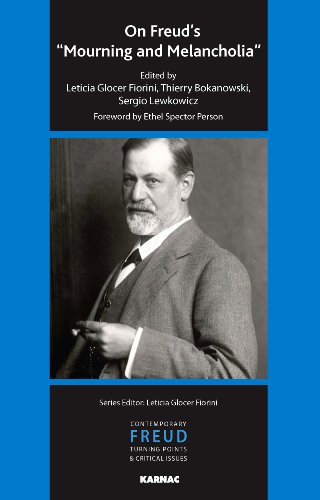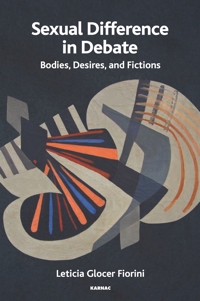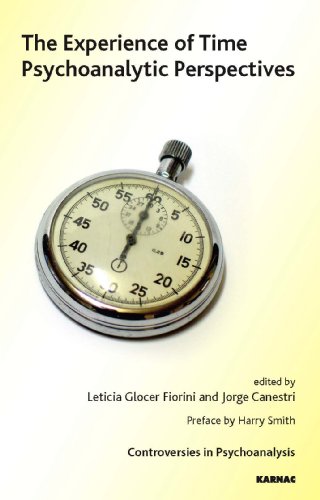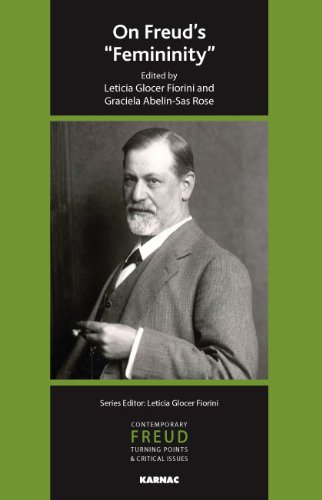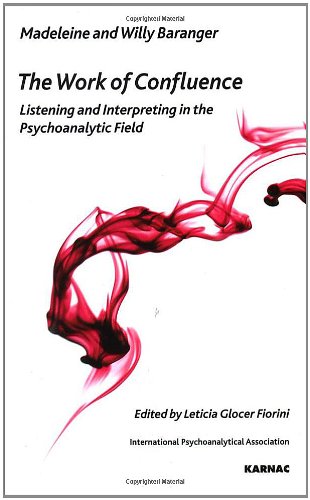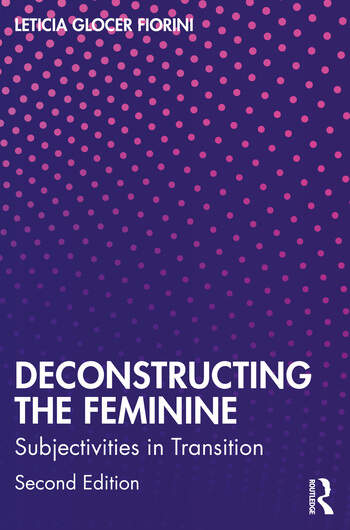Deconstructing the Feminine
The beginning of the 21st Century is manifesting important changes in the symbolic codes that regulate social ties. Changes in the feminine condition and their impact on the field of the masculine, single parent families as well as homosexual couples and families express marked modifications in the ways human relations are configured concerning the model of the nuclear family, especially in Western societies.
High-speed advances in the field of cyber culture and bio-technology also produce new types of relations. Virtual sex and the cybernetic use of sexuality pose new and weighty questions concerning the role of the real body in the field of sexuality. Techniques of assisted fertilization update issues concerning relations between female sexuality and maternity, the concept of desire for a child and the notion of paternity. Sex change surgeries generate a necessary debate on the determinants of sexual identity and the production of subjectivity. Although these advances affect different societies in different ways they do set a tendency whose effects demands further investigation.
In this context, a legitimate question can be focused on the impact of these phenomena on today's conceptions regarding the feminine and the masculine. The way the feminine is viewed and its complex relation to men and women is tightly bound up with the concept of sexual difference and - precisely because of the attendant discordances, contradictions and paradoxes - upsets supposedly established "facts".
In this book, I started out with the theoretical obstacles and impasses regarding the feminine condition, in the conviction that this subject questions a certain comfortable knowledge that characterizes the subject of that knowledge. A critical review of categories assigned to women and the feminine implies both working with the logics involved in the concept of sexual difference and also dealing with the polysemy of the notion of the feminine.
However, this indispensable examination also aims at illuminating fundamental aspects of clinical work: firstly, the ways in which the myths, ideals, conventions and stereotypes regarding the masculine and the feminine are inscribed in every analyst and secondly, the way they are intertwined with the construction of interventions and interpretations and, no less important, how they become a part of scientific theories.
In this investigation, we also need to focus on the relations of power-domination between the genders. The phenomena of violence that impregnate these relations can be observed in different cultures, racial and ethnic groups and social classes.
I analyze these issues by considering some notions that are frequently attached to the feminine in opposition to the masculine. They are part of the social imaginary, and their rigid assignment to the feminine or masculine polarity forms an obstacle, in both the theoretical and clinical domains. A facilitated line leads to consider the feminine as equivalent to nature, to the irrational and to the object of desire and of knowledge. On the other hand, the masculine is classically ascribed to the field of culture, to reason, to the subject of desire and of knowledge. Additional dualisms which are also part of the social discourse are strong/weak, self/other and presence/absence, also attributed to the masculine and the feminine, respectively,
In particular, the relations of domination and violence reside in binary polarities, which in turn generate relations of domination, since dualisms inevitably involve mutually excluding alternatives.
Beyond the values assigned to those qualities, the point is that essentialist notions are configured concerning the feminine and the masculine. These ideas stem from complex phantasms, shared by both sexes, related to those conceptualizations that place women in the field of the enigma or "black continent". In my text, I debate the notion of the "feminine enigma" and conceptions of the feminine as the negative of the masculine. This involves a foray into the nature-versus-nurture debate, as well as into the interpretations that consider the feminine as The Other of the masculine.
My purpose was to undertake the deconstruction and analysis of these polarities, with the conviction that the impasses inherent to binary thinking need to be cross-examined by today's epistemologies. At those crucial intersections, we can illuminate these categories with new effects of signification. My proposal is to de-centre false alternatives and mobilize the binary options by including them within growing complexities. In this line, I discard the "or" for the "and", but not for an "and" that would annul the contradictions with false syntheses, but for an "and" capable of holding them in tension. This method opens the way to thinking about feminine subjectivity in a multi-centric fashion.
I do this by highlighting controversial issues that have been discussed throughout the development of the psychoanalytic movement, beginning with the never-ending Freud-Jones debate on whether femininity is primary or secondary, debate which has acquired increasingly sophisticated forms. Part of this book focuses on issues relating to desire, love and the passing of time, to beauty, maternity and female sexuality. It considers the role of the real body concerning the sexual difference and debates the universal conceptions of women.
My intention is to contribute a contemporary, psychoanalytic view of these issues, in an attempt to deeply examine the difficulties women face even today to assume a position as a subject, a position that Modernity has been unable to articulate.
High-speed advances in the field of cyber culture and bio-technology also produce new types of relations. Virtual sex and the cybernetic use of sexuality pose new and weighty questions concerning the role of the real body in the field of sexuality. Techniques of assisted fertilization update issues concerning relations between female sexuality and maternity, the concept of desire for a child and the notion of paternity. Sex change surgeries generate a necessary debate on the determinants of sexual identity and the production of subjectivity. Although these advances affect different societies in different ways they do set a tendency whose effects demands further investigation.
In this context, a legitimate question can be focused on the impact of these phenomena on today's conceptions regarding the feminine and the masculine. The way the feminine is viewed and its complex relation to men and women is tightly bound up with the concept of sexual difference and - precisely because of the attendant discordances, contradictions and paradoxes - upsets supposedly established "facts".
In this book, I started out with the theoretical obstacles and impasses regarding the feminine condition, in the conviction that this subject questions a certain comfortable knowledge that characterizes the subject of that knowledge. A critical review of categories assigned to women and the feminine implies both working with the logics involved in the concept of sexual difference and also dealing with the polysemy of the notion of the feminine.
However, this indispensable examination also aims at illuminating fundamental aspects of clinical work: firstly, the ways in which the myths, ideals, conventions and stereotypes regarding the masculine and the feminine are inscribed in every analyst and secondly, the way they are intertwined with the construction of interventions and interpretations and, no less important, how they become a part of scientific theories.
In this investigation, we also need to focus on the relations of power-domination between the genders. The phenomena of violence that impregnate these relations can be observed in different cultures, racial and ethnic groups and social classes.
I analyze these issues by considering some notions that are frequently attached to the feminine in opposition to the masculine. They are part of the social imaginary, and their rigid assignment to the feminine or masculine polarity forms an obstacle, in both the theoretical and clinical domains. A facilitated line leads to consider the feminine as equivalent to nature, to the irrational and to the object of desire and of knowledge. On the other hand, the masculine is classically ascribed to the field of culture, to reason, to the subject of desire and of knowledge. Additional dualisms which are also part of the social discourse are strong/weak, self/other and presence/absence, also attributed to the masculine and the feminine, respectively,
In particular, the relations of domination and violence reside in binary polarities, which in turn generate relations of domination, since dualisms inevitably involve mutually excluding alternatives.
Beyond the values assigned to those qualities, the point is that essentialist notions are configured concerning the feminine and the masculine. These ideas stem from complex phantasms, shared by both sexes, related to those conceptualizations that place women in the field of the enigma or "black continent". In my text, I debate the notion of the "feminine enigma" and conceptions of the feminine as the negative of the masculine. This involves a foray into the nature-versus-nurture debate, as well as into the interpretations that consider the feminine as The Other of the masculine.
My purpose was to undertake the deconstruction and analysis of these polarities, with the conviction that the impasses inherent to binary thinking need to be cross-examined by today's epistemologies. At those crucial intersections, we can illuminate these categories with new effects of signification. My proposal is to de-centre false alternatives and mobilize the binary options by including them within growing complexities. In this line, I discard the "or" for the "and", but not for an "and" that would annul the contradictions with false syntheses, but for an "and" capable of holding them in tension. This method opens the way to thinking about feminine subjectivity in a multi-centric fashion.
I do this by highlighting controversial issues that have been discussed throughout the development of the psychoanalytic movement, beginning with the never-ending Freud-Jones debate on whether femininity is primary or secondary, debate which has acquired increasingly sophisticated forms. Part of this book focuses on issues relating to desire, love and the passing of time, to beauty, maternity and female sexuality. It considers the role of the real body concerning the sexual difference and debates the universal conceptions of women.
My intention is to contribute a contemporary, psychoanalytic view of these issues, in an attempt to deeply examine the difficulties women face even today to assume a position as a subject, a position that Modernity has been unable to articulate.
By Leticia Glocer Fiorini
View more details for Leticia Glocer Fiorini
On Freud's "Mourning and Melancholia"
- Paperback
On Freud's "Femininity"
- Paperback


